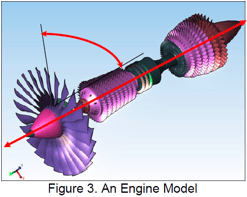Working With Large Models - Black Box Methodology
Black Box Methodology aims to turn sub-assemblies into single components when working in a model. By analyzing the sub-assembly first, the variation from that assembly can be applied to the overall assembly as a component in a larger structure, such as an aircraft.
This also helps when using data from suppliers, and in the case of 3DCS users, when using parts that may contain Compliant Components. Once the sub-assembly is black boxed, it contains the variation from its own analysis, but does not bog down your overall tolerance analysis simulation. This also removes the need to continually use Add-on module licenses when opening the model.
Advantages of Black Box:
- A big model with a lot of MTMs and a big stackup can be replaced by some points and tolerances;
- Only final results can be shared with other companies. Modeling strategy and process tolerances are hidden;
- Several Black Box Scenarios can be done based on only one model Data Generator Model run;
- Heavy FEA Compliant models can be replaced by a few points (also optimizing FEA licenses).
